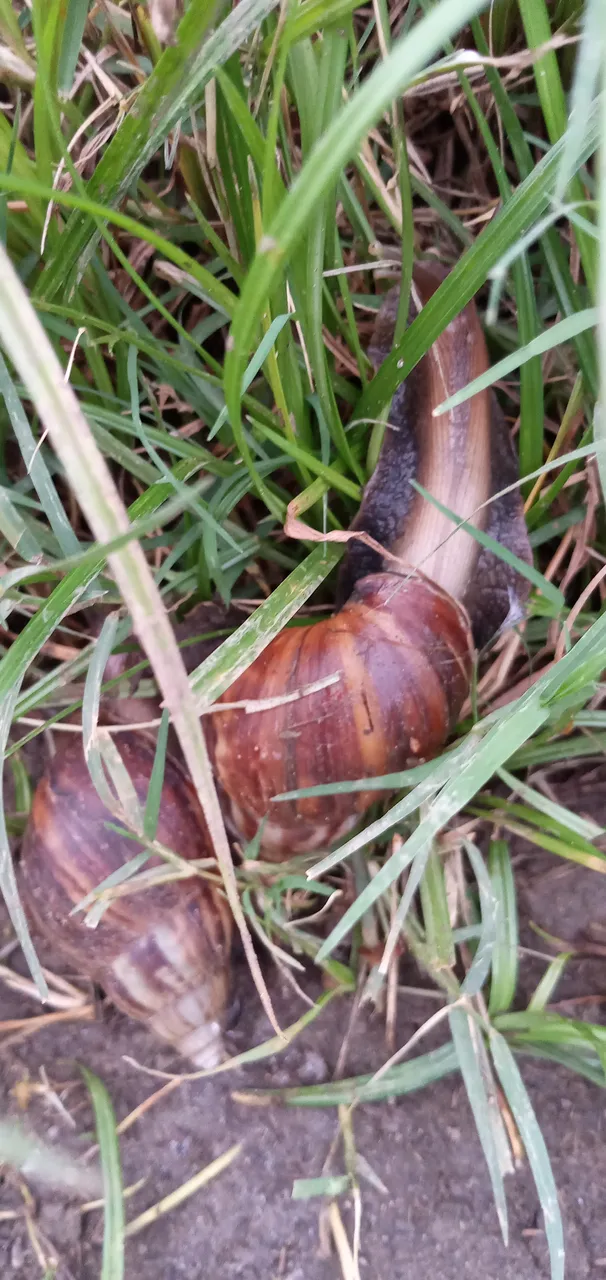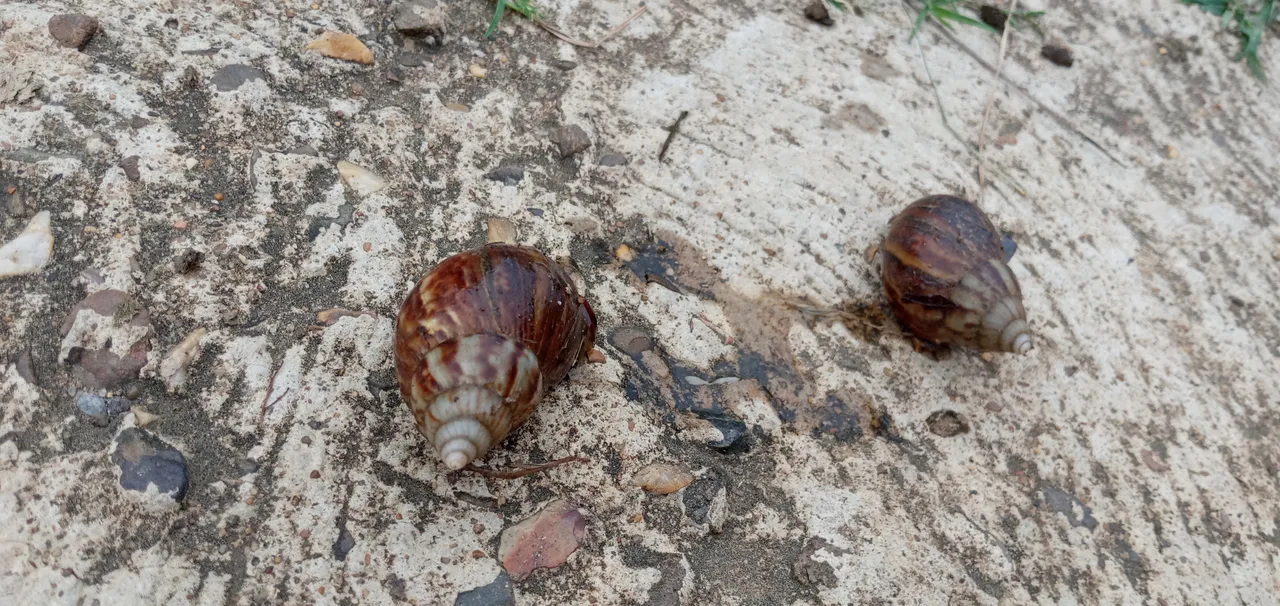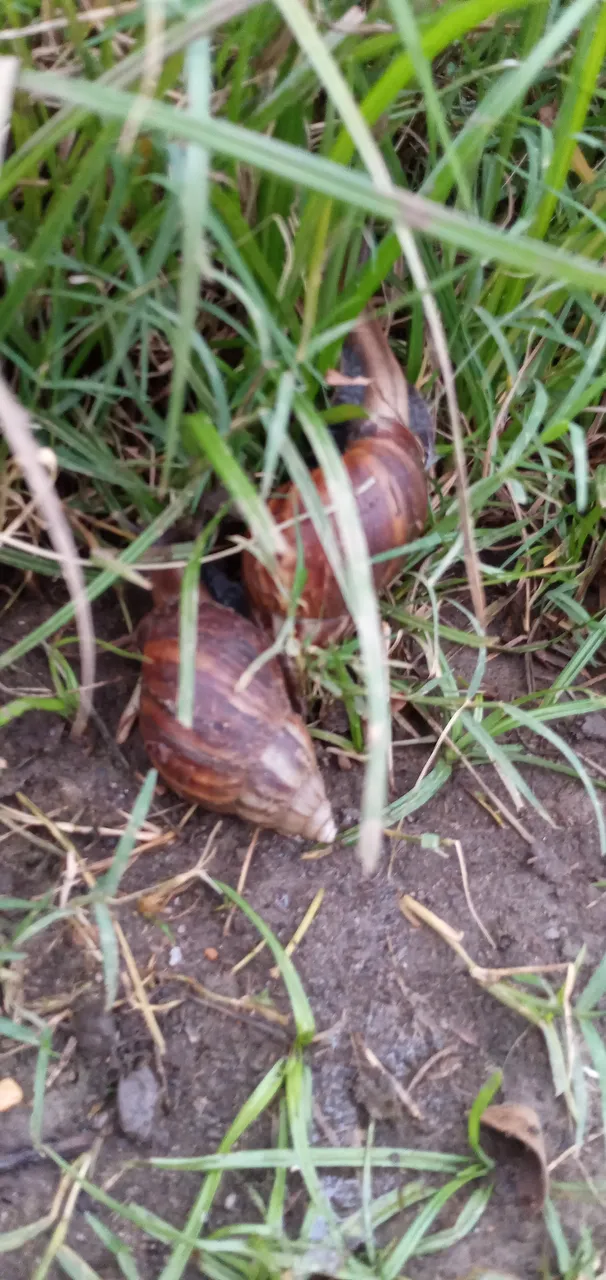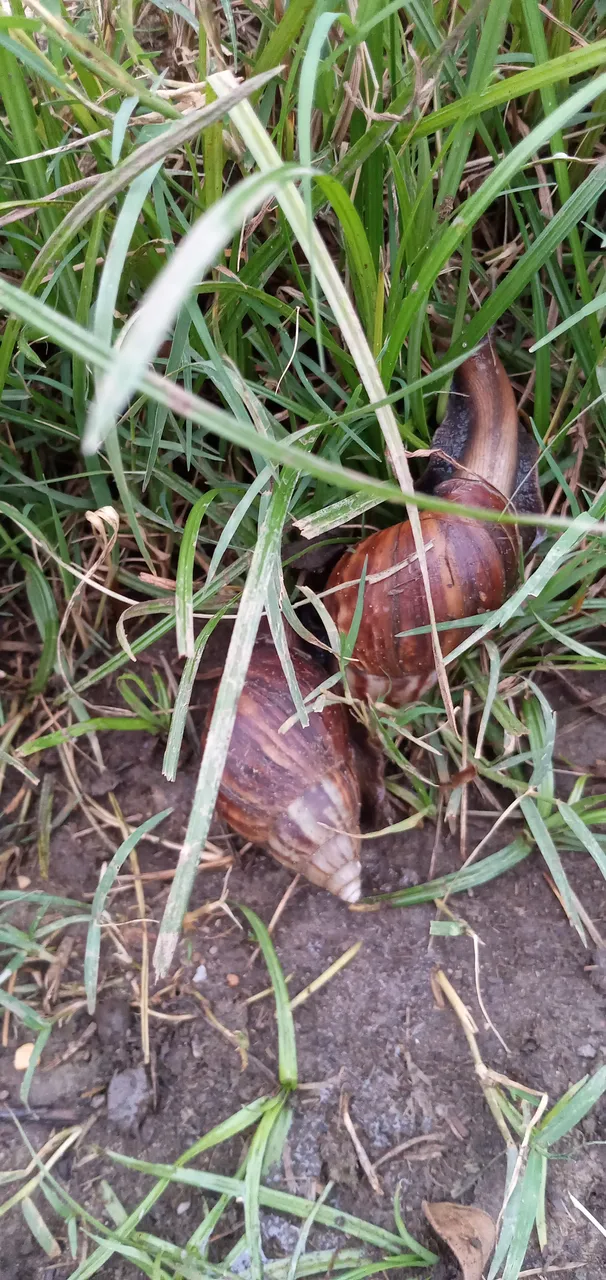
Greetings dear friends of hive blog, thank God for the days that He gives us, today I am going to tell you about two beautiful snails.
Saludos apreciados amigos de hive blog, a Dios gracias por los días que nos regala, hoy les voy hablar de dos hermosos caracoles.

This afternoon while visiting the garden of my house after the rain I found two beautiful giant African snails, I can tell you that I thought that snails only existed on the beaches, in the sea, but I see that not here in my small town there are also.
This giant African snail is a terrestrial species, belonging to the family Achatinidae, in the order Stylommatophora, they are frequently found in gardens, also in crops, where they feed on different plants.
Esta tarde mientras visitaba el jardin, de mi casa después de la lluvia me encontré con dos hermosos caracoles gigantes africanos ,les puedo decir que yo pensaba que los caracoles solo existían en las playas, en el mar, pero ya veo que no aquí en mi pequeño pueblo también hay.
Este caracol gigante africano es de una especie de terrestre,perteneciente a la familia Achatinidae, en el orden Stylommatophora., ellos se encuentran frecuentemente en jardines, también en los cultivos, donde se alimentan de distintas plantas.

In human health, it is said that this African snail transmits parasites and bacteria that can cause death to people or animals through its slime, causing serious diseases in the central nervous system such as eosinophilic meningoencephalitis and digestive diseases such as eosinophilic ileocolitis.
Doctors say if you handle one of these snails it is better to wash your hands with soap and plenty of water. We do not know if this snail produces parasites in its slime, it is better not to touch them, although they are harmless.
En la salud humana, se dice que este caracol africano trasmite parásitos y bacterias que pueden causar hasta la muerte a personas o animales, esto a través de su baba,causa graves enfermedades en el sistema nervioso central como la meningoencefalitis eosinofílica y digestivas como la ileocolitis eosinofílica.
Los médicos dicen si manipulas un caracol de estos es mejor lavarse las manos con jabón y abundante agua no sabemos si ese caracol produce parásitos en su baba, es mejor no tocarlos, aunque ellos son inofensivos.

I hope you enjoy it and I hope to continue sharing a little more with you.
Espero que sea de su interés y agrado para seguir compartiendo un poco mas con ustedes.